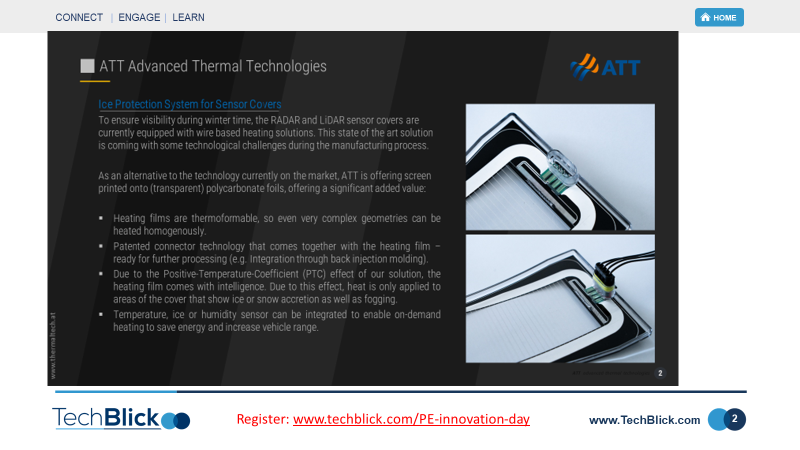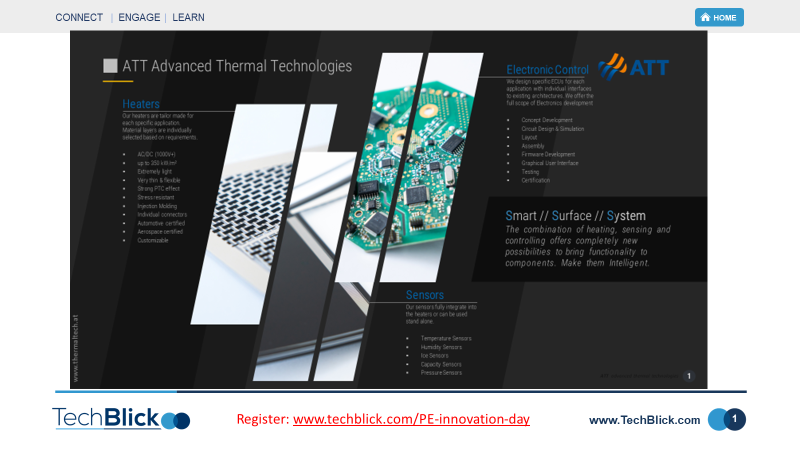Since advanced driver-assistance systems (ADAS) hit the auto market, reliable LiDAR and RADAR systems are crucial in the development of advanced self-driving vehicles. A significant challenge is to guarantee clear visibility even in the harshest environmental conditions.
ATT advanced thermal technologies GmbH will present an excellent solution based on screen printing at TechBlick's event Free-to-Attend event on 2-DEC 2022. See agenda and sign up free here: https://www.techblick.com/PE-innovation-day
To ensure visibility during winter, the RADAR & LiDAR sensor covers are currently equipped with wire based heating solutions. This state of the art solution comes with some technological challenges during the manufacturing process, causing significant scrap rates. The homogeneity of the sensor cover temperature is often inadequate and overheating or even burning issues have been detected.
Since the required cooling air inlet of electrified vehicles is significantly smaller than that of a ICE car, large covers are used in the vehicle’s frontend to mimic characteristic air inlet designs by incorporating a decorative, opaque foil into the otherwise transparent cover. These grills house all types of sensors and cameras and thus, need to be heated to ensure a clear view of those devices, so a wire based heating system is added in addition to the decorative film.
ATT advanced thermal technologies GmbH offers two alternative variants, both screen printed onto (transparent) polycarbonate foils, saving process costs with respect to the currently available embedded wire technology.
1) Instead of using wires, printed heating films based on silver are used This heating film is back moldable and transparent, and can be easily integrated in the back injection process, thus reducing the scrap rate significantly.
Heating films are thermoformable, allowing complex geometries to be heated homogeneously.
Patented connector technology comes with the heating film.
High power density (up to 0.4 W/cm2) leads to improved deicing times, a 2 mm ice layer can be melted in less than 180 seconds
Thin (starting from 175 μm) and transparent in the wavelength relevant for RADAR and LiDAR.
2): This technology features a PTC effect based on a combination of silver and carbon inks, enabling on-demand heating of the sensor cover. Due to PTC effect, heat is only applied to areas of the cover that show ice or snow accretion as well as fogging. The PTC effect enables significantly increased power densities, resulting in faster de-icing rates than any other solution currently available on the market.
Transparency in relevant wavelength regimes
Heating films are thermoformable
High power density (up to 1,5 W/cm2) leads to improved deicing times (a 2 mm ice layer can be melted in less than 60 seconds).
Hear ATT advanced thermal technologies GmbH at TechBlick's event free-to-attend event on 2-DEC 2022. See the agenda and sign up free https://www.techblick.com/PE-innovation-day








Komentar